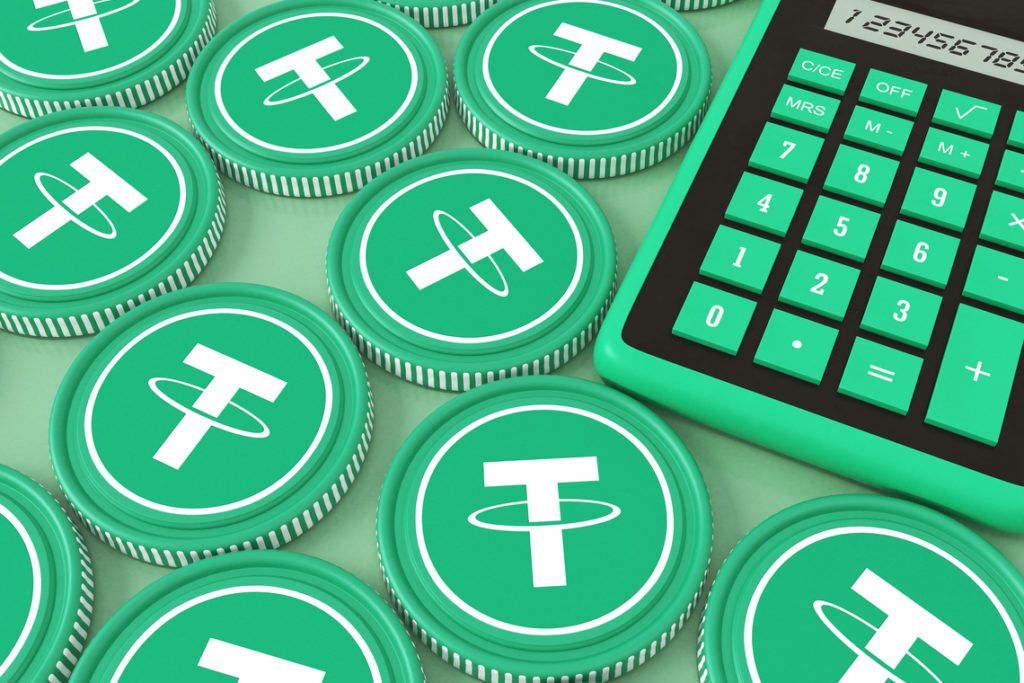Months ago, the launch of new stablecoins like TrueUSD (TUSD), Paxos Standard Token (PAX), and USD Coin (USDC), some foresaw 2019 to be the year of stablecoins. They could be right and that’s not necessarily a good thing for the cryptocurrency market.
In the beginning, there was Tether (USDT), an under-the-radar token built on Bitcoin’s OMNI layer which was pegged to the US Dollar and had a market cap of just a few million dollars. In the past few years, however, Tether saw unprecedented success. After announcing their banking problems for the first time, in Apr 2017, the company kept growing exponentially from around $50 million in market cap to a peak of over $2.8 billion, in Sept 2018.
The lack of real audits raised some serious questions concerning the dollar peg. Since the company behind USDT never really answered those questions, some saw an opportunity and capitalized on it by creating their own dollar-pegged coins. And that is how a whole new crypto asset class — the stablecoin, was born.
Dollar For Dollar
Initially, the role of stablecoins was to provide the trader easy access to a familiar and stable currency without actually going to the bank. In other words, stablecoins like USDT, TUSD, PAX, or USDC are a good hedge against the volatility of the cryptocurrency market. Moreover, in the early days, redeeming USD via USDT didn’t require know your customer (KYC) and anti-money laundering (AML) compliance. Now though, stablecoins are slowly taking center stage, eclipsing the real cryptocurrencies. They are not just a hedge, but also arbitrage instruments and important revenue makers. Most importantly, exchanges do not just list them in pairs with other cryptocurrencies. The exchanges also list stablecoins in pairs with themselves.Indeed, you can now trade dollars for dollars on Binance, since every PAX, TUSD, and USDC is worth $1. The USDT market is also covered: the PAX/USDT, TUSD/USDT, and USDC/USDT pairs were added last month. Who would want to trade such pairs, in the first place, and why?#Binance Will Add PAX/TUSD, USDC/TUSD and USDC/PAX Trading Pairshttps://t.co/XdLlGtp5Lz pic.twitter.com/OxlhvcrMC4
— Binance (@binance) January 7, 2019
Liquidity? Maybe! Arbitrage? Most Likely!
Some traders would be interested, no doubt, to move their funds easier between exchanges, without worrying about price volatility. For example, a trader who has USDC on Coinbase decides to expand their portfolio by adding other, less known cryptocurrencies. Most exchanges use USDT, thus, the trader could go to Binance, swap USDC for USDT, and buy the desired cryptocurrency, without experiencing the Bitcoin swings. Most of the money though, will not be made using this strategy. Since stablecoins are not really worth exactly $1 at all times (their value moves in a close range between $0.98 and $1.02), some traders could take advantage of the arbitrage opportunities. Others who were savvier could profit big, behind the curtains. Just days ago, rumors emerged that Gemini traded their own stablecoin, Gemini Dollars, at a discount over-the-counter, in order to boost its activity. Swapping discounted stablecoins for other dollar-pegged tokens, which presumably don’t use such strategies, can be very profitable for premium traders or even exchanges that handle large sums of money. In such cases, exchanges like Binance could profit big from the fees collected, in case of a major stablecoin-to-stablecoin swap.2019: Introducing Stablecoins Futures!
Adding dollar-for-dollar trading is not the only big news in the stablecoin market in the New Year. UK Bitcoin exchange Coinfloor is ready to make the next jump by planning to offer stablecoin futures to Asian investors in February.The upcoming futures platform CoinFLEX will offer Tether-based contracts. In other words, if someone shorts Bitcoin, at expiry, that someone will deliver Bitcoin and receive USDT. If a trader is long on Bitcoin, he will deliver USDT and receive BTC instead, at expiry. That’s not all, though. There will be other futures contracts involving stablecoins exclusively: a contract to trade Tether against USD Coin. Indeed, if the peg is real in both cases, that would mean a trader could short or long the US Dollar against itself. How is such a contract even possible? Maybe to allow Tether critics to put their money where their mouth is. Do you believe Tether is hiding something and its dollar peg is not real? Do you want to use a stable currency and still bet against Tether? Then you could short Tether and receive USDC instead when the contract is due.This crypto exchange is taking on the behemoths with physical Bitcoin futures https://t.co/aNIHMVd8C8
— Bloomberg Technology (@technology) January 7, 2019

Going Backward, Not Forward
Dollar-for-dollar trading and betting against the US Dollar with the US Dollar may seem like a joke, but, unfortunately, it is not. These two cases are the latest examples of a cryptocurrency market gone terribly wrong. Instead of focusing to create a better world based on sound money and decentralization, we are just rebranding the old and current fiat-based system. We are not creating new money; we are just using the same but in a different manner. Stablecoins are the ultimate proof as we slowly ditch Bitcoin and other meaningful cryptocurrencies, only to turn our attention to dollar-based crypto derivatives. In 2007 and 2008, the economy crashed because of similar derivatives that hid toxic assets underneath. Like the stablecoins pairs and futures, those derivatives were convoluted and did not make much sense. Initially seen as a miraculous solution to everybody’s problems (including the economy), the Collateralized Debt Obligations (CDOs) and Mortgage-Backed Securities (MBSs) – the financial instruments that caused the subprime crash and economic recession in the US – only concealed the mess the economy was in, without actually solving anything. By inflating the stablecoin bubble, we are basically doing the same thing and slowly, but surely, moving away from Satoshi Nakamoto’s vision of a new world without central banks and without a single point of failure. Are stablecoins really necessary given today’s KYC and AML standards? What about stablecoins pairs or futures? Share your opinions in the comments below!
Top crypto projects in the US | April 2024
Trusted
Disclaimer
In adherence to the Trust Project guidelines, BeInCrypto is committed to unbiased, transparent reporting. This news article aims to provide accurate, timely information. However, readers are advised to verify facts independently and consult with a professional before making any decisions based on this content. Please note that our Terms and Conditions, Privacy Policy, and Disclaimers have been updated.

Florian Gheorghe
I started out in print journalism in 2008 and switched to freelancing two years later. Afterward, I covered the poker and gambling scene for several years before getting into sports and motivational stories.
Crypto-wise, I first learned about Bitcoin just months after the Mt. Gox event. I’ve been riding the bulls and the bears ever since.
I started out in print journalism in 2008 and switched to freelancing two years later. Afterward, I covered the poker and gambling scene for several years before getting into sports and motivational stories.
Crypto-wise, I first learned about Bitcoin just months after the Mt. Gox event. I’ve been riding the bulls and the bears ever since.
READ FULL BIO
Sponsored
Sponsored
